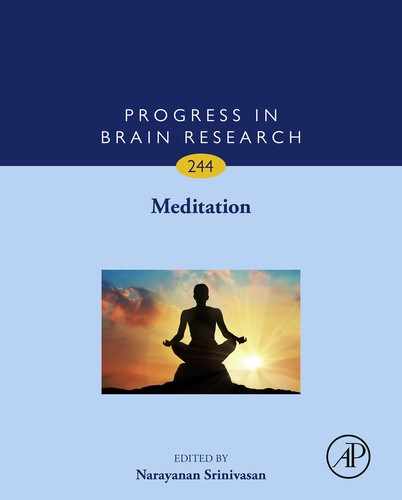Table of Contents
Chapter 1: The neuroscience of meditation: classification, phenomenology, correlates, and mechanisms
3 Classifying meditation techniques
5 Structural and functional correlates of meditation practices
6 Oscillatory correlates of meditation
7 Mechanisms underlying meditation and attention regulation
8 Mechanisms underlying meditation and emotion regulation
2 Description of consciousness in yogic texts
3 Investigations on electro-neurophysiology of meditation
Chapter 3: Meditation induces physical relaxation and enhances cognition: A perplexing paradox
2 The meditation and relaxation response
3 Neuro-physiological model of meditation
4 The cognitive restructuring during meditation
5 Thought wandering and detection of intruding thoughts
6 Meditation can improve cognition
7 Possible mechanism of cognitive enhancement during meditation
Chapter 4: Contingent negative variation and P3 modulations following mindful movement training
Chapter 5: State-trait influences of Vipassana meditation practice on P3 EEG dynamics
2 Neuroimaging study with color afterimages
Chapter 9: Toward a brain theory of meditation
2 Characterizing different forms of meditation and their relationships
3 Brain networks, brain states and meditation
4 Conscious access, global workspace and meditation
5 Outline of a brain theory of meditation (BTM)
2 General introduction of debate as a form of analytical meditation
3 A biobehavioral model of monastic debate
4 Quantifying the phenomenology of monastic debates
5 Comparing debate to other meditation practices
6 Potential applications of debate in societal domains
2 Methodological considerations
4 The problem of qualified subjects and training new subjects
Chapter 12: Nondual awareness: Consciousness-as-such as non-representational reflexivity
2 Phenomenology and philosophy
1 The appeal of a guiding theoretical framework
2 The basics of predictive processing
4 Meditation in the light of predictive processing
Chapter 15: Contemplative neuroscience, self-awareness, and education
3 Teachers’ self-processing and mindfulness practice
Chapter 16: Yoga: Balancing the excitation-inhibition equilibrium in psychiatric disorders
1 The role of GABAergic neurotransmission in psychiatric disorders
2 Modulating the GABAergic system for therapeutic gains
3 Role of yoga in psychiatric disorders
4 A mechanistic understanding of the effects of yoga: The role of GABA and oxytocin
